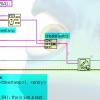Performance on different CPU:s
-
Similar Content
-
DevOps Engineer -- for audio test & measurement in Boston (LISTEN)
By J D,
- automated tests
- continuous integration
- (and 3 more)
- 0 replies
- 2,886 views
-
- 5 replies
- 2,983 views
-
- 3 replies
- 2,487 views
-
- 5 replies
- 8,513 views
-
- 2 replies
- 3,980 views
-





Recommended Posts
Join the conversation
You can post now and register later. If you have an account, sign in now to post with your account.